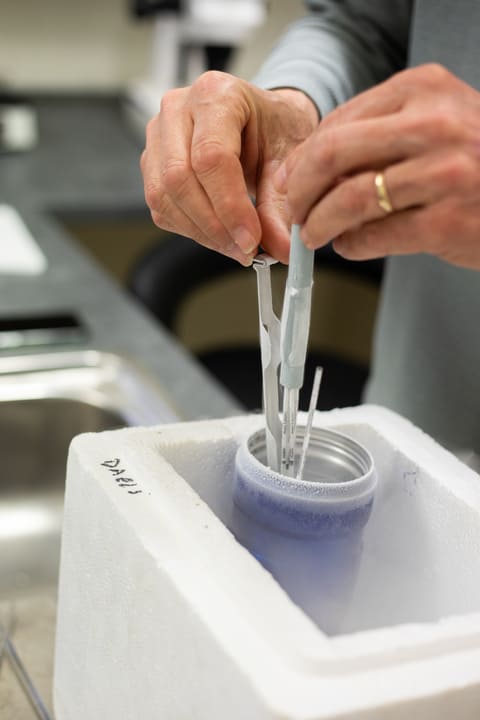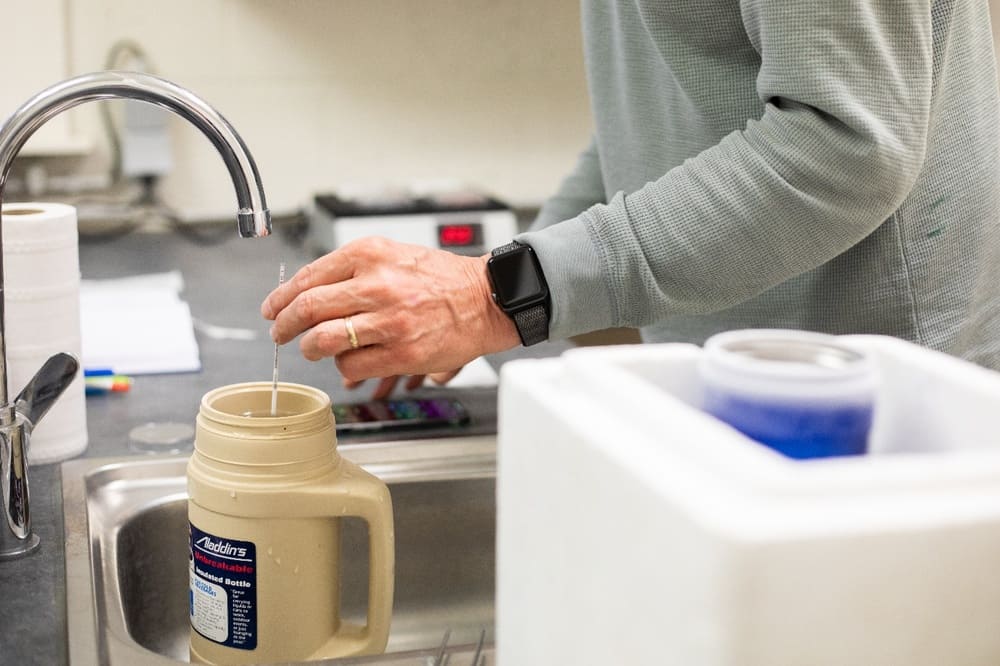
ICSI Embryos
Ovum Pick Up (OPU) and ICSI have become indispensable tools in modern horse breeding today. The transplantation of ICSI embryos requires specialized equipment, expertise and laboratory facilities. Moreover, success rates with ICSI embryos vary depending on factors such as the quality of the embryo, the skills of the veterinarian performing thawing of the frozen ICSI embryos and transplantation into the carrier mares, as well as the health and synchronization of the carrier mares. The success rate with ICSI embryos is greatly influenced by the carrier mare. ICSI embryos are younger and more fragile and require a carrier mare that is at a very precise stage of her cycle and has had a perfect estrous cycle.
ICSI embryos are usually frozen and stored in liquid nitrogen. The thawing of ICSI embryos is a critical step in the entire process, and performing this step correctly determines the success or failure of the transplant. In addition to correctly handling the fragile ICSI embryo, the carrier mare is also very important. The literature has clearly shown that carrier mares at 4 days after ovulation are the ideal candidate to receive an ICSI embryo. In addition, the recipient mare's uterus must be immaculate and the mare's cycle must be completely normal. At ETC Hans Smet, the ICSI carrier mares are checked daily during her stallionhood for any minor abnormalities that would make her less than ideal as an ICSI carrier mare. Only this very strict and detailed follow-up allows us to present excellent results year after year.
ICSI embryos can also be transplanted directly, without freezing. When the embryo is sufficiently developed, it is immediately transferred from the ICSI laboratory to the carrier mare for transplantation. This technique has the advantage that the embryo is not frozen and thawed, steps that add extra stress to the embryo and can affect the viability of the young ICSI embryo. So-called "fresh" ICSI embryos are transported in the same way as classic fresh embryos and appear to tolerate this transport particularly well.
ICSI embryos at ETC Hans Smet
Since 2019, we have focused on the correct handling of ICSI embryos and the selection of suitable recipient mares for ICSI embryos. This has resulted in gestation rates comparable to those obtained with fresh embryos. We have extensive experience with embryos frozen with vitrification (embryos originating at Equiception, Vetembryo and UGent) as well as embryos frozen slowly (Avantea and Hans Hurkmans ET). Our embryo transfer centre has gained a place among the embryo transfer centres in Europe that are most successful with ICSI embryos and we continue to constantly improve the technology in close cooperation with various ICSI laboratories.

